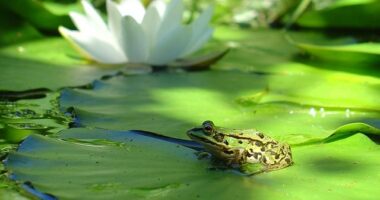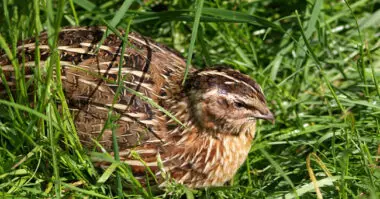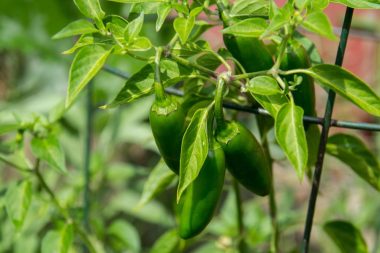The tortoise is herbivorous, folivorous and frugivorous. The diet must be varied and low in fat and protein but rich in minerals (calcium and phosphorus).
It is extremely important for its development (especially that of its carapace) and its well-being to eat healthily. A poor diet can lead to serious illness, and in the worst case death.
To make this clear from the beginning: The tortoise should not eat lettuce. Indeed, it becomes very quickly toxic for him.
Another thing to know, the plants and food in general recommended are to be planted in the enclosure directly in the ideal. Otherwise, you can always buy / pick them.
Here are 13 plants that you have to provide your tortoise with:
- Dandelions
- Clover
- Alfalfa
- Lamb’s lettuce
- Bindweed
- Beets
- Wild chicory
- Radish leaves
- Beet leaves
- Turnip leaves
- Violets of the daisies
- Broccoli
- Nettle leaves / plantain
Contents
What does a tortoise eat?
The tortoise feeds on plants, grass and fruits. Its food must be rich in fiber and minerals, mainly calcium, and it is essential to provide it with vitamin A and D, but the quantity must be limited to avoid over dosage.
Because of its metabolism, the tortoise does not necessarily have to be fed every day and perhaps deprived one day a week, if its food is balanced and well dosed. This reptile eats little, it consumes only 10% of its weight at each meal for a young tortoise, and about 5% for an adult specimen.
It is important to provide a diet consisting of 90% fresh vegetables and 10% fresh fruit. It also requires a calcium intake of about 3 to 4 times higher than the phosphorus intake. Although fresh food is recommended, there is no harm in feeding your tortoise dried food. It is always necessary to privilege seasonal elements and why not enrich the water or the food of your small companion with calcium carbonate powder.
Foods to avoid for your tortoise
It is absolutely necessary to avoid your tortoise a too important contribution of phosphorus or certain vitamins. Certain foods are also dangerous for your reptile. One finds in these foods to be proscribed:
- Rice
- Pasta
- The bread
- Dairy products
- Chocolate
- Cakes and other sweets
- The meat
- The fish
- Shellfish and seafood
- The peelings
- Spinach
- Rapeseed
- Mushrooms
- Cauliflowers
- Artichokes
- Brussels sprouts
- Corn
- Lettuce
- Peas
- Lenses
- Garlic/Onions
- The potatoes
Some leaves such as oak or hemp are strictly forbidden, so it is advisable to check on a case-by-case basis before feeding a leaf to your tortoise. The same goes for flowers.
It is also necessary to completely prohibit any processed food designed for another animal. The food of the ground tortoises differs completely from that of the water tortoises, it is thus not necessary to provide them the same food, that could have serious consequences on your small tortoise.
Should I give water to my tortoise?
The previous food brings all the water necessary for the tortoise.
However, shallow cups of water in the enclosure are essential because tortoises need to swim in case of too dry weather, as the tortoises rehydrate themselves by absorption at the cloaca.
Swimming also favors transit, which is why it is important to change this water every day.
The habitat of the land tortoise
For many, a land tortoise can spend its life outdoors, in a garden: this is partially true. Even if indeed, a land tortoise can indeed walk, once adult, in a garden during the beautiful days, it will be necessary to make it live in a terrarium during its juvenile period, especially for exotic species.
The terrarium of a juvenile land tortoise
Since land tortoises are reptiles, and therefore cold-blooded animals, they will need to be provided with a heating system. Therefore, it is better to take a glass terrarium, as it will better retain the heat you provide.
Of course, the terrarium will have to be big enough to accommodate your tortoise. You will have to adapt to the size of the species you own, but be aware that its size will have to be at least one meter wide and 20 inches long. The height doesn’t really matter.
It will also be necessary to bring a heat source, as well as UVB and UVA, necessary for the well-being of your tortoise. Fortunately, there are specific lamps, which you can easily find in specialized stores.
The substrate (or ground) should be made of earth (soil style), and the terrarium should have a cool spot, away from the heat of the lamp, as well as a hiding place.
Bringing a tortoise to life in your garden
Once adult, your ground tortoise will be strong enough to live in your garden during the beautiful days (from March to October). However, it will not be completely autonomous, since it will still be necessary to take care to feed it and give it something to drink.
Summary
The land tortoise requires special attention, both in its habitat and in its diet. It is a species of fragile reptile and very sensitive to diseases, it is thus necessary to make them follow a strict diet to avoid any complication.
Here are some basic principles and examples of what you can, or should not, feed a land tortoise if you want it to stay healthy.









